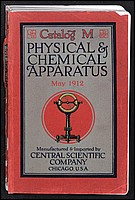
Back Zásilkový obchod Czech Versandhandel German Venta por catálogo Spanish Postimyynti Finnish Vente par correspondance French Csomagküldő szolgálat Hungarian Pesanan lewat pos ID Vendita per corrispondenza Italian 通信販売 Japanese 통신판매 Korean

Mail order is the buying of goods or services by mail delivery. The buyer places an order for the desired products with the merchant through some remote methods such as:
- Sending an order form in the mail
- Placing a telephone call
- Placing an order with a few travelling agents and paying by installments [1]
- Filling in a form on a website or mobile app — if the product information is also mainly obtained online rather than via a paper catalogue or via television, this model is online shopping or e-commerce
Then, the products are delivered to the customer. The products are usually delivered directly to an address supplied by the customer, such as a home address, but occasionally the orders are delivered to a nearby retail location for the customer to pick up. Some merchants also allow the goods to be shipped directly to a third party consumer, which is an effective way to send a gift to an out-of-town recipient. Some merchants delivered the goods directly to the customer via their travelling agents.
A mail order catalogue is a publication containing a list of general merchandise from a company. Companies who publish and operate mail order catalogues are referred to as cataloguers within the industry. Cataloguers buy or manufacture goods then market those goods to prospects (prospective customers). Cataloguers may "rent" names from list brokers or cooperative databases. The catalogue itself is published in a similar fashion as any magazine publication and distributed through a variety of means, usually via a postal service and the internet.
Sometimes supermarket products do mail order promotions, whereby people can send in the UPC plus shipping and handling to get a product made especially for the company.
- ^ Mail order retailing in Britain : a business and social history. Oxford: Oxford University Press. 2005. p. 17. ISBN 0198296509.
© MMXXIII Rich X Search. We shall prevail. All rights reserved. Rich X Search